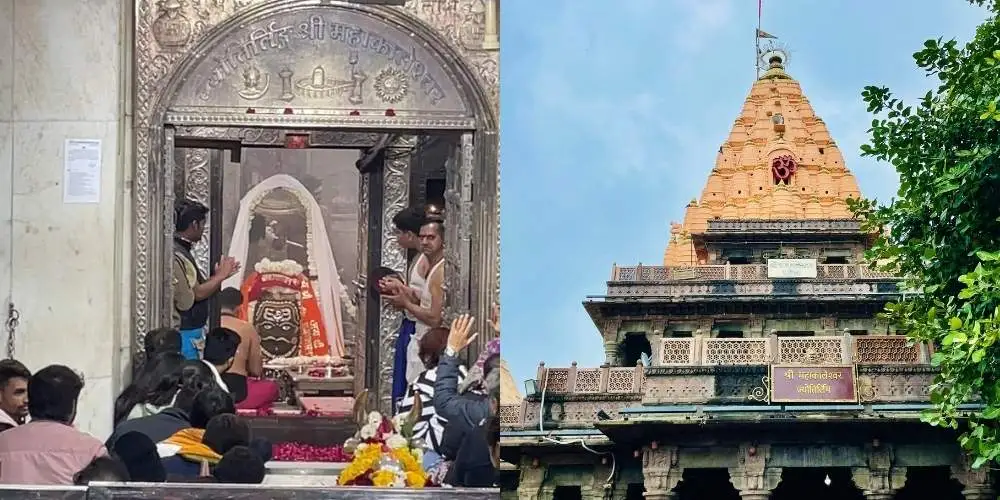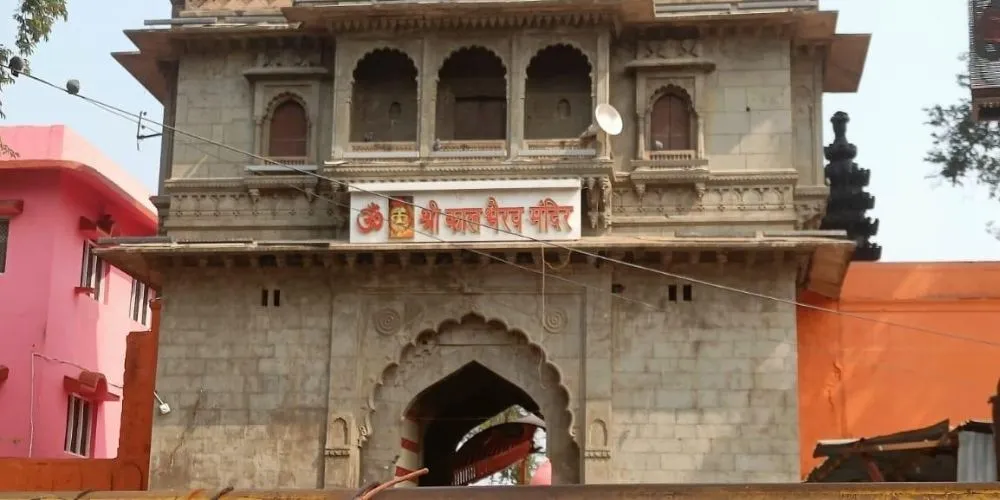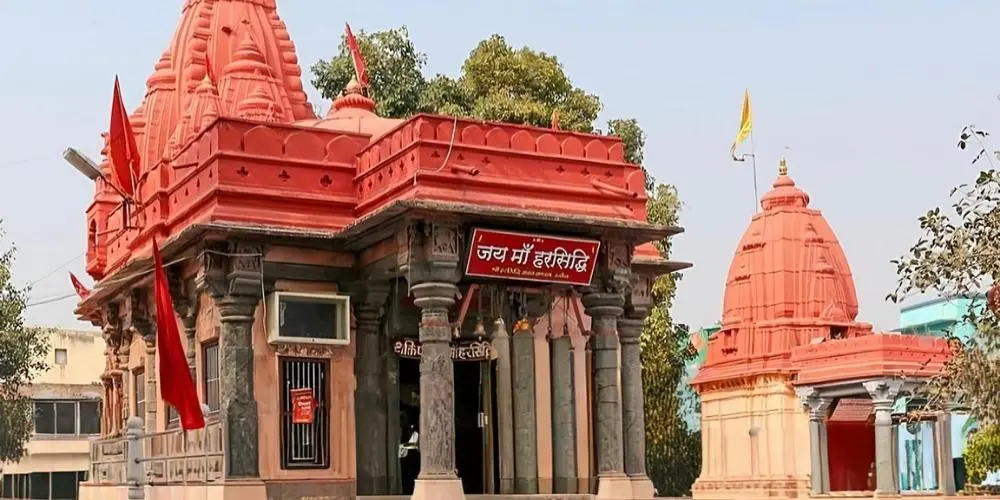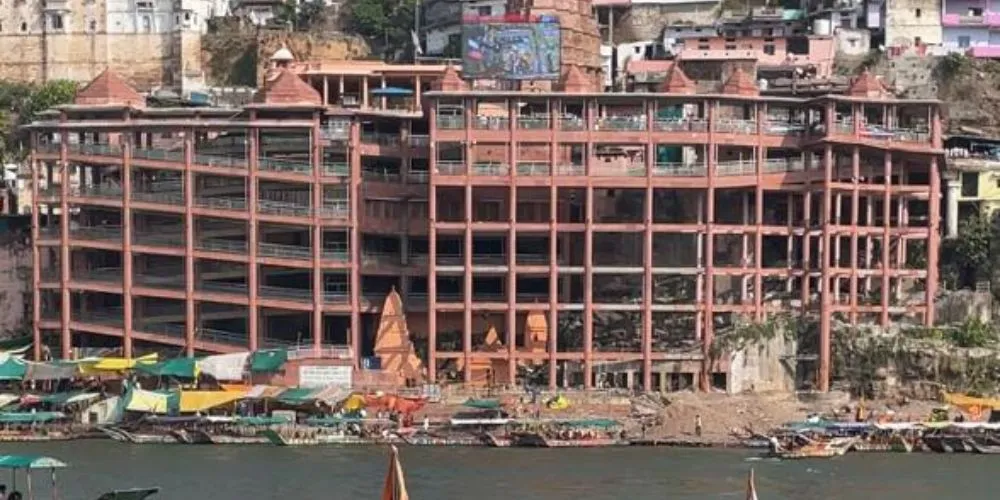Image Source of Mahakaleshwar Temple, Ujjain @ By Ashverse – Own work, CC BY-SA 4.0
Ujjain, the name itself is reminiscent of old books and temple bells. If you’re someone who loves history, wandering streets, eating prasadam, or simply sitting by a river and letting the world slow down, Ujjain is the kind of place that has everything for you. Here, every lane echoes stories of kings, yogis, and celebrations that pull people from all over the country and beyond.
Once the capital of Avanti, Ujjain was a spot for trading, learning, and living well. From Kalidasa the wordsmith to Chandragupta Vikramaditya the warrior king have inhabited Ujjain. Ancient mathematicians worked out the shape of the zero and mapped the stars from here. It has also weathered Mughal and Maratha shells, becoming a living museum in Madhya Pradesh. In modern times, Ujjain draws tourists not only for its rich history but to take them on a journey of faith.
Shree Mahakaleshwar Mandir Ujjain
Try waking up before dawn and join lines of pilgrims flocking to Shree Mahakaleshwar Mandir. This temple is one of the twelve Jyotirlingas, the sacred homes of Lord Shiva. People say it’s the only one where the Shiva lingam faces south and is ‘swayambhu,’ meaning it emerged naturally and isn’t placed by human hands. The famous Bhasma Aarti, where the lingam is adorned with sacred ash at 4 AM, is something you should not miss. You’ll find dozens of rituals around the temple, chanting, offerings of water, flowers, and the constant hum of mantras.

Shayan Aarti at Shree Mahakaleshwar Temple, Ujjain
Right inside the complex, you’ll also come across Omkareshwar Lingam (on the middle floor), reminding us of the twin Shiv temples that rule this route. The Nagachandreshwar temple, higher up, only opens on Naag Panchami, drawing crowds eager for that once-a-year darshan.
More Places to See in Ujjain
- Ram Ghat: The main bathing ghat on River Shipra, especially lively during Kumbh Mela. Sunsets here, with floating earthen lamps, make even an ordinary day feel holy.

- Kal Bhairav Temple: People offer liquor here; yes, you read that right! Lord Bhairav, associated with fierce protection, is worshipped in ways you rarely see anywhere.

Shri Kal Bhairav Temple
- Sandipani Ashram: Where legend says Lord Krishna learned as a student.
- Jantar Mantar (Vedh Shala): A spot where ancient scholars watched the movements of the sun and stars.
- Bhartrihari Caves: A peaceful place near the river where Bhartrihari, once a king, meditated and turned into a yogi.
- Harsiddhi Temple, Mangalnath Temple, and Kaliadeh Palace: Each place brings its own story of kings, gods, or ancient builders.

Harsiddhi Mata Temple
Hotels in Ujjain
Ujjain has simple dharamshalas and hotels where rooms with AC and Wi-Fi are available. Some popular options are Hotel Imperial Grand, Hotel Kalpana Palace, Shipra Residency, Hotel Atharva, Anjushree Hotel, and Meghdoot Resort; from budget-friendly to top-quality and close-by to the Mahakal temple, there are plenty of options. Book in advance during festivals or on weekends, as pilgrims and tourists fill up the rooms quickly.
Most hotels offer vegetarian food, local tours, and help with arranging pujas or temple visits. If you’re planning to go to Omkareshwar, some travel agencies and cabs offer deals for round trips.
Food, Shopping, and Strolling
The bazaar surrounding the Mahakaleshwar Mandir is a must visit for the local shopping experience where you can buy souvenirs like rudraksha, idols, Kumkum, and colorful glass bangles. Try the local poha and kachori at breakfast, sip sweet lassi after your temple rounds, and finish with Ujjain’s iconic malpua or peda; all delicious and fresh. The food is lip-smacking and sure to put you in a deep slumber.
Important Tip: The city is safe and friendly, but keep an eye on your belongings amid crowded ghats or during the big fair.
Ujjain to Omkareshwar
After Ujjain fills your soul, you’ll want to stretch the journey to Omkareshwar Jyotirlinga. The Ujjain to Omkareshwar distance is around 140 km by road, and takes about 3.5 to 4.5 hours depending on traffic and route. The fastest way is Ujjain to Indore and then towards Omkareshwar via Barwah, all well kept national highways. You’ll get to see changing scenery; fields, small towns, and eventually, the grand Narmada river winding around the temple island.
Buses run regularly on this route but a cab is quicker and lets you stop whenever you want for snacks and snaps. If visiting by train, go via Indore or Khandwa, though trains are less frequent.
Omkareshwar Jyotirlinga: Where Shiva’s Blessing Meets the River
Omkareshwar Temple rises from a small island called Mandhata, at the confluence of the Narmada and Kaveri rivers. The shape of the island resembles the sacred ‘Om’ symbol, when viewed from high above.
The temple is said to be the fourth Jyotirlinga among the twelve Jyotirlingas. As you step inside, the main lingam; a round black stone, emerging from Mother Earth can be seen surrounded by the sound of bells and the soft rushing of the Narmada. Legends and the Puranas mention Shiva’s miracles here, and many believe a parikrama (circumambulation) of the island brings peace and moksha.

Omkareshwar Temple
Nearby are shrines for Parvati, Ganesh, and many smaller temples dotted along the ghats. Couples, families, and elderly folk all come for pujas, rituals, or just to sit and soak up the energy.
Where to Stay in Omkareshwar
There are ashrams, guesthouses, and small hotels across the bridge and near temple ghats; simple, clean, and suited to the spiritual vibe. You could also choose to stay in Indore and make a day trip, but you’ll get a fuller experience spending the night in Omkareshwar, waking up to the sound of conchs and birds.
Handy Tips Before You Go
- Wear decent, comfortable clothes; temple visits usually prefer covered shoulders and knees; cotton kurtas, sarees, or full trousers work best.
- Early mornings and evenings are best for darshan, particularly at Mahakaleshwar before the crowds.
- Carry a water bottle, cap, sunscreen, and slippers; you’ll walk a lot and spend time in open areas.
- For temple rituals, check timings; Ujjain’s Bhasma Aarti starts at 4 AM and needs advance booking.
- Keep cash handy. While cards work at hotels, street shops and smaller places prefer cash.
- If traveling during the summer or festival season, book trains, buses, and hotels well in advance.
- Leave some time for river walks, simple village strolls, and evening aartis.
Ujjain and Omkareshwar: A Pilgrimage in Every Step
In Ujjain you see an amalgamation of history, myth, and faith. Walk along the ghats, listen to stories, eat local sweets, and bow to the shrines. Then, make the peaceful road trip to Omkareshwar, where the river’s embrace adds a gentle magic. Back in your room at night, you’ll feel it; the old pulse of India is still strong, still shining.
This trip is not just for believers; it’s for anyone who wants to touch the roots of Indian culture. So, whether you’re lighting a lamp at Mahakal, buying a string of beads in the bazaar, or letting Narmada’s breeze settle on your skin: Ujjain and Omkareshwar bring their heritage and grace straight into your journey.
By: Anushka Singhal
